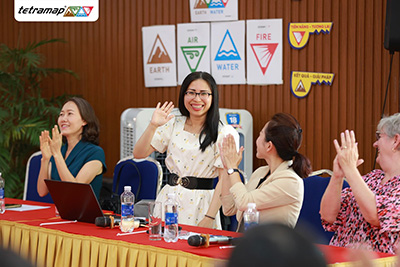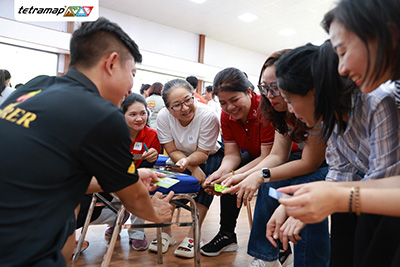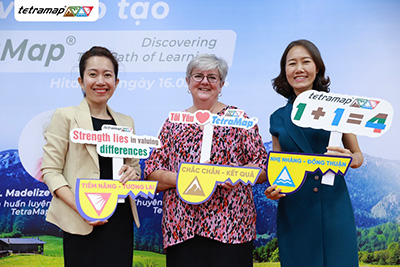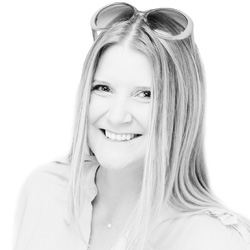Newsletter April 2024
Welcome from Louise
Hi from Louise and welcome! This is a place for us all to embrace all things TetraMap and share our news, learnings and successes. It’s been a great start to the year and this March we introduced TetraMap further into South East Asia making Vietnam the forty fifth country to join the TetraMap community. We couldn’t be more delighted – it’s a real tribute to the vision of our founders Jon and Yoshimi to see the enormous progress made in the twenty years since I became a TetraMap facilitator, and how people are increasingly eager to share our unique approach to improving communication, collaboration, teamwork and more!
As TetraMap facilitators we have all learned to value the richness diversity provides in all its forms, and this is something we continue to promote every day. It highlights is how important it is to recognise and harness diversity in our teams – and lives – as some of you may have seen in my recent blog where I share my beliefs that we can change culture from within. I made a short video too.
On the theme of diversity Master Facilitator, Ian Blackwell, talks about team effectiveness in his March blog and emphasises how diversity is the key and the powerful role TetraMap can play.
Ian is clear that the more diverse a team, the stronger it is likely to be: “It is about having a respectful understanding and appreciation of the difference that each person brings, and their value-added contribution that TetraMap does so incredibly well.”
He also observes that, while it can be uncomfortable, people develop even greater self-awareness when using their least preferred element in the ‘your lowest preference exercise’ where it allows them to walk in the shoes of those that are most different to them. He says “this is something I’ve experienced many, many times – in my view your lowest element is your greatest challenge and opportunity.”
This is your newsletter and we want to hear your thoughts on what you’d like to see included in future.
Please email Elaine to share your experiences.
As always, thanks for your ongoing support. You are the best!
TetraMap launches in Vietnam
 The transformative power of TetraMap is set to spread further into South East Asia with its launch in Vietnam this March (2024), making it the 45th country to join the TetraMap community.
The transformative power of TetraMap is set to spread further into South East Asia with its launch in Vietnam this March (2024), making it the 45th country to join the TetraMap community.
The introduction of TetraMap into Vietnam highlights its inclusive appeal across the globe and demonstrates its value as a common language that is non-judgemental, cross-cultural and multi-generational. It has required a huge commitment from the certified facilitators in Asia working with TetraMap International, including translating the Why Are You Like That? workbook across continents.
At the launch event over 150 participants gathered to explore and experience TetraMap and the TetraPath of Learning, in a signature style fun filled session.
Louise Duncan, Managing Director, TetraMap International, said: “Entering into a new market takes a lot of courage, planning, consideration and vision. Reaching out across the world is a true illustration of the power of inter-dependence and our belief that strength lies in valuing differences.”
 “Everyone contributed so much to the launch and I would like to congratulate a fantastic team – with a vision that turned into action – (particularly Bich Nguyen (Brahmi), Phuong Ho (Lily), Madelize Bekker and Darcy Vo.
“Everyone contributed so much to the launch and I would like to congratulate a fantastic team – with a vision that turned into action – (particularly Bich Nguyen (Brahmi), Phuong Ho (Lily), Madelize Bekker and Darcy Vo.
Special thanks to Raymond Yap Pik Hwee from Singapore, who was instrumental in creating this opportunity, and for his ongoing commitment in bringing TetraMap to more countries and people across Asia.”
Brahmi says “By applying lessons from nature and practicing how to look at problems from multiple perspectives, TetraMap will provide people with practical tools to help them live more harmoniously and happily. My goal in spreading TetraMap knowledge is not only to help connect people together with deep understanding and gratitude for each other, but also to guide them to a new approach to self-education and reconcile within themselves, and with others , both in family and work environments.”
 She continues “The students all had very good transformations after just 1 day of class, making many people extremely surprised by the ease of application of TetraMap. They became more radiant, more affectionate, more comfortable and understanding. And if I were asked what I enjoyed most at the end of the course, it would be to witness the love blooming from all of the students.”
She continues “The students all had very good transformations after just 1 day of class, making many people extremely surprised by the ease of application of TetraMap. They became more radiant, more affectionate, more comfortable and understanding. And if I were asked what I enjoyed most at the end of the course, it would be to witness the love blooming from all of the students.”
TetraMap is now available in the UK, New Zealand, Australia, Europe, South America, the Middle East, South Africa, United States, Canada, and the West Indies.
If you know anyone who would like to join our ever-growing TetraMap community please contact Louise.
Trust the process
![]() We have all experienced the positive outcome of a TetraMap workshop – the fun, laughter, ‘aha’ moments – the sheer simplicity of the process. All aimed at bringing very different people together with a better understanding of our behavioural styles. But what happens when a group is entirely skewed towards one preference?
We have all experienced the positive outcome of a TetraMap workshop – the fun, laughter, ‘aha’ moments – the sheer simplicity of the process. All aimed at bringing very different people together with a better understanding of our behavioural styles. But what happens when a group is entirely skewed towards one preference?
Since certifying as a trainer in recent years, Austria-based facilitator Suzanne Whitby has had few opportunities to use TetraMap in her work with scientists and researchers. When the chance arose to work with a large group of German students on communication styles, she suggested offering a TetraMap workshop and was delighted when the university agreed. Given that some time had passed since her training, she tapped into the many resources on the TetraMap website, supported by Ruth Robinson, General Manager TetraMap UK, who took time out to remind her of how the online tools worked. On the day, Suzanne was ready with a toolbox of resources and activities to enhance the experience.
Suzanne set the scene carefully. With well over a decade of experience of working with physical and life scientists, she had anticipated challenges and questions. Participants wanted to know about the statistical validity of the tool, asked about how the tool compensates for the known challenges with self-assessment, and questioned how such a simple tool can provide communication insights. Suzanne’s approach? To ask participants to keep an open mind and try something new.

“I made it clear from the start that TetraMap isn’t a scientific tool, but rather an instrument that can be useful in understanding and remembering behavioural tendencies and styles,” said Suzanne.
“By the end of the workshop, everyone had seen how easy it was to use the learning from TetraMap to help bridge communication gaps and reduce conflict.”
Did the TetraMap workshop leave participants with new insights? Suzanne’s impressions are mixed. The group, which had an overwhelming tendency towards high air, continued to be sceptical about using TetraMap throughout the workshop, which made for a tricky session. In spite of that, several students stayed for over an hour after the workshop to explore how to use TetraMap to communicate better with their supervisors and the resulting feedback from the workshop was broadly positive.
The workshop left Suzanne wondering if it had much of an impact, but that’s not quite the end of the story. Since running it, individual students have been in touch to share how they have used TetraMap strategies to improve communication in their research groups. Which just goes to show that sometimes learning takes a bit longer to make sense.
Suzanne is philosophical about the experience: “They weren’t the easiest group to work with, and I’m not sure everyone was wholly convinced, but that’s okay. We all come to these things at different times, and sometimes we’re just not ready.”
Ruth Robinson, said: “Suzanne did an amazing job with a tough group. It is unusual to have so many of the same element in one group and it does make it difficult to experience the full process when you don’t have team members of different elements. We always say, ‘trust the process’ and Suzanne did, as well as doing her homework.”
Handling challenges and welcoming questions in a ‘tricky’ group
Experience counts for a lot and we have asked some of our most experienced facilitators what they have done in similar circumstances.
Louise: In this situation it’s important to lean on two or three things:
- We all have aspects of All Elemental preferences ( as shown in the graphs, acknowledge the discovery, and ask a question: “We all understand each other clearly, (which is great) – AND who else outside of our own group do we want/ need to communicate more effectively with?”
- Use the second Element and stickers to highlight the individual’s uniqueness AIR/Earth or AIR/Water or AIR/ Fire. It’s rare that in any group the order of the four Elements will be exactly the same – that’s even before you consider the scores.
- Remember the slide which shows there are 63,000,000,000,000 ways you can answer the 10 question instrument.
We are NOT categorising anyone. We ARE catalysing a useful discussion! Finally, be clear and remain calm as Suzanne clearly did.
Emma: That’s a tough gig so well done Suzanne! This rings bells with me and I guess my number one tip is to channel curiosity. Any person’s TetraMap results are based on a finite number of responses – so there’s lots of space for exploration that encourages the group to discover and embrace differences beyond the surface level.
- When we introduce the Elements we often notice that people see the importance of the different descriptors of each Element to greater or lesser degrees and this varies from person to person. Draw these nuances out and keep going with that during the presentations activity.
- Have some strategies ready to help the group focus on the interplay of the second and third Elements. Have them reflect individually on how their top three Elemental preferences are showing up and set some group work where participants with the same second preference explore a topic.
- A catalytic question I often lean on in times like this is – How will we represent more diversity across the Elements day-to-day? Help the team come up with some strategies for inclusion across all four Elements as a way of drawing out the other Elements and encouraging diversity. Maybe have them imagine that they are settling in a new team member who has different primary preferences to get them to identify how they work to include them
Madelize: People with the level of expertise mentioned in this case study are often referred to as ‘clever’ teams and they require a special type of leadership (here I see the facilitator as the leader).
- When dealing with clever teams, it is essential to understand their key motivators. I wonder whether this group felt clear about the purpose of the training. Was there buy-in or did they see the training as a distraction from the key value that they believe they offer the organization through their focused work? Did they have a choice in attending the training or were they ‘told’ to? How was the training framed – as something they need because they ‘lack’ skills or as something that will add value to their daily work? If you know this before you start working with these teams (science, engineering, IT, medical, etc) it goes a long way in helping you to frame the training through the metaphor card activity, for example.
- These teams often show initial scepticism about the value of soft skills training. This scepticism often stems from a belief that technical skills are more critical and quantifiable. Teams like this often respond better to the concept of ‘interdependence’ than ‘basic communication’. Highlighting the importance of interdependence in relation to their work really early on in the workshop often works well (without others in the organization and without being able to communicate really clearly and respectfully with others in the organisation the best of their ideas and work will come to nothing because there will be no systems and mechanisms to carry their work through).
- “Leading Clever People by Rob Goffee and Gareth Jones” (https://hbr.org/2007/03/leading-clever-people )is quite an old article in the Harvard Business Review but it has stood me in good stead since my first encounter with a science team in early 2008 and beyond 😊
